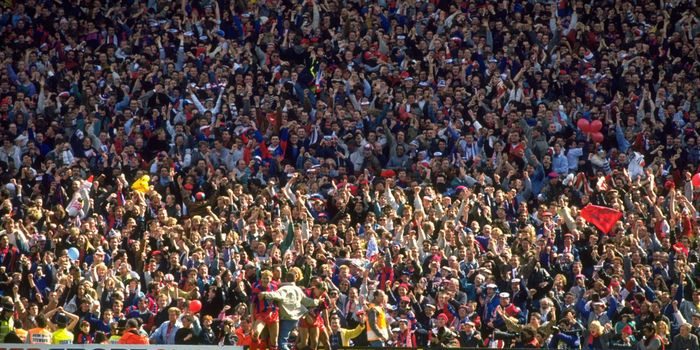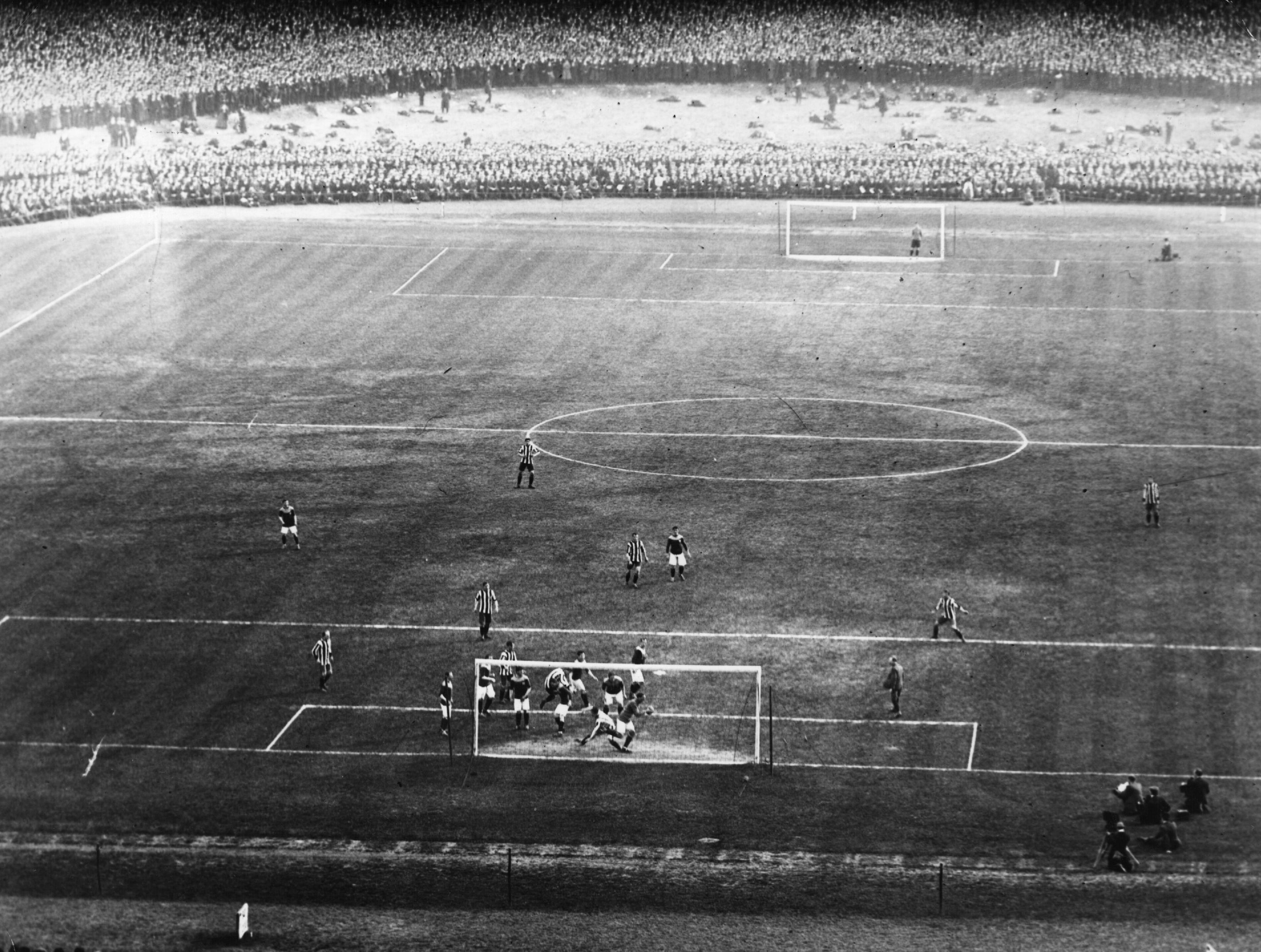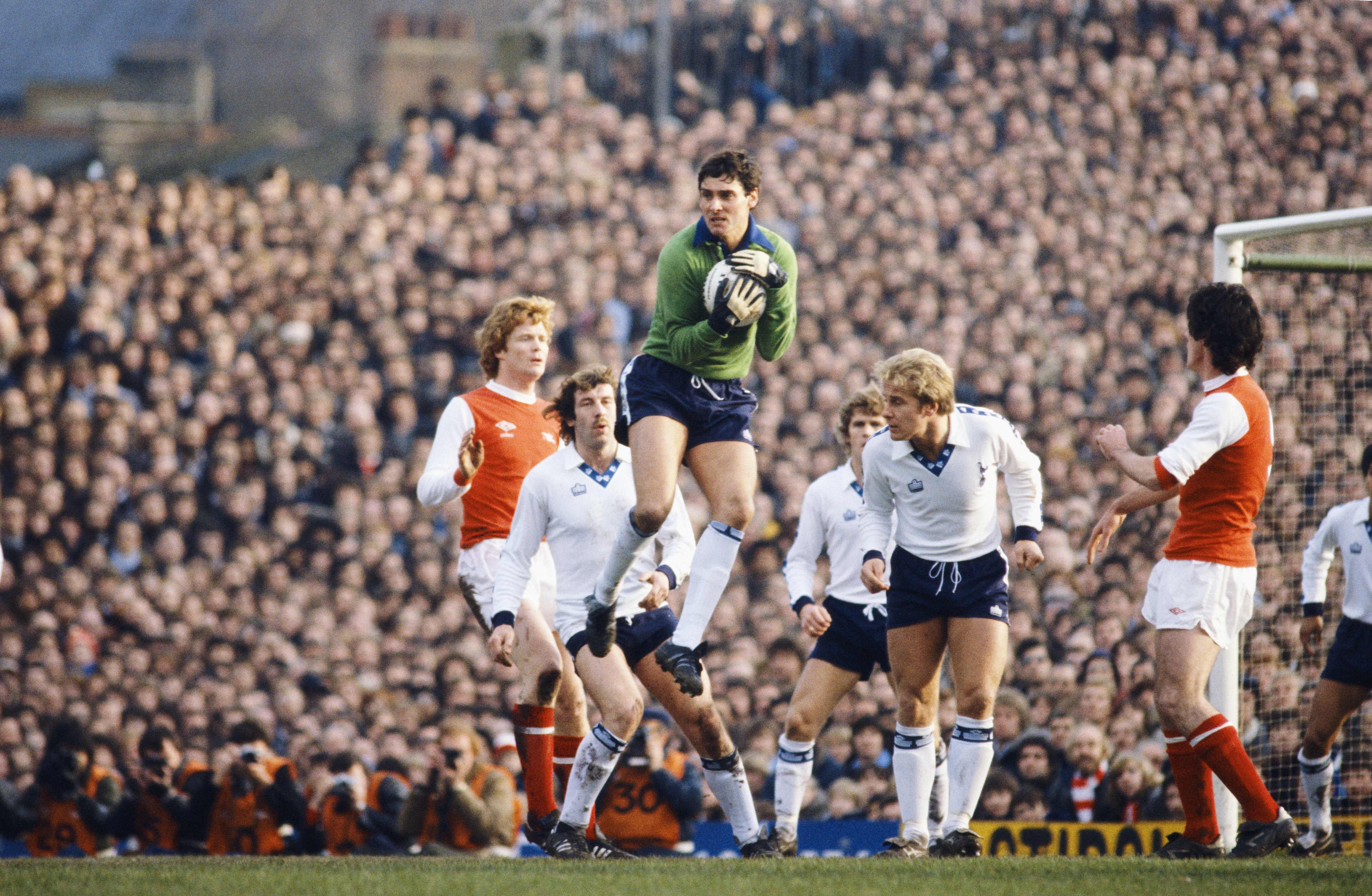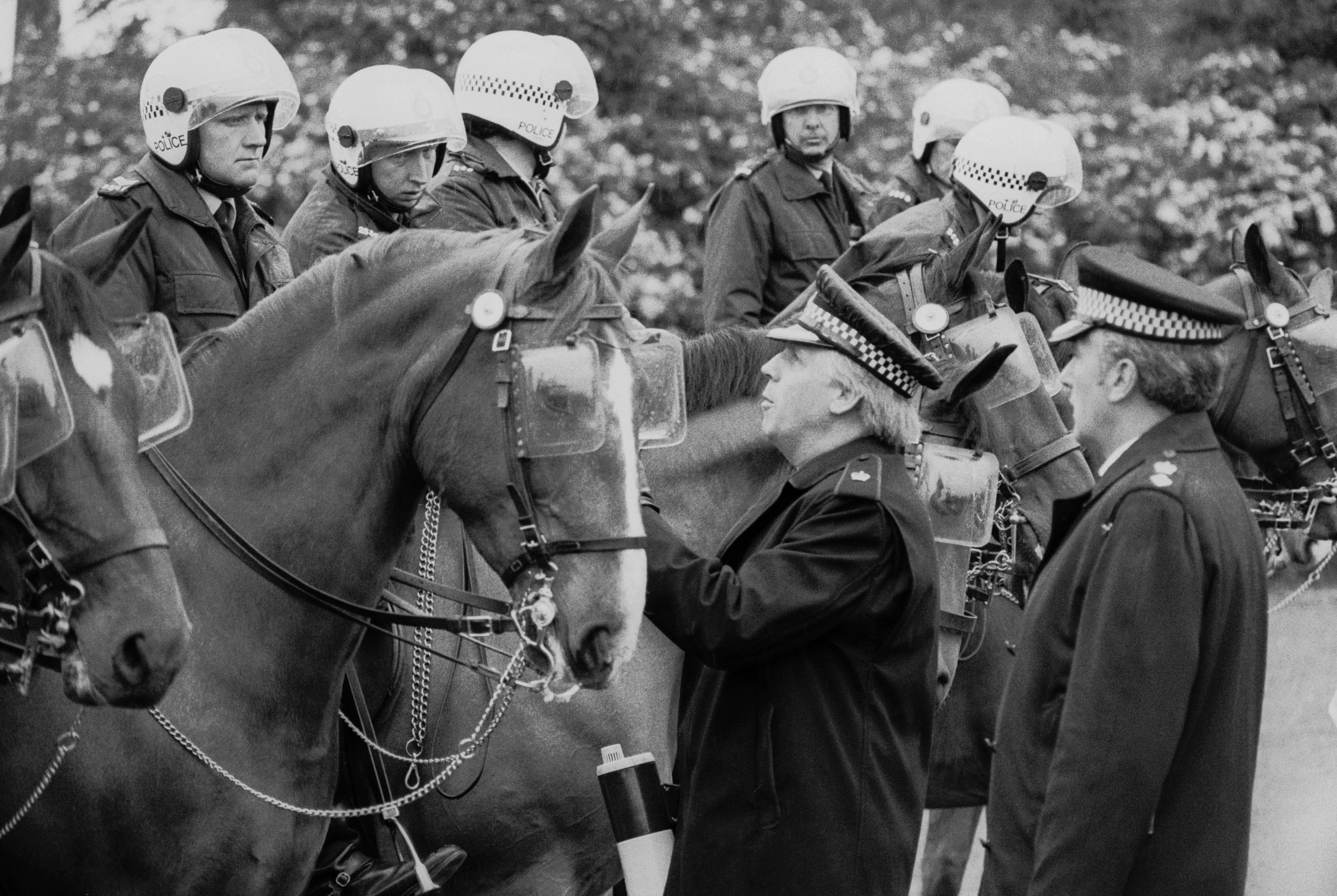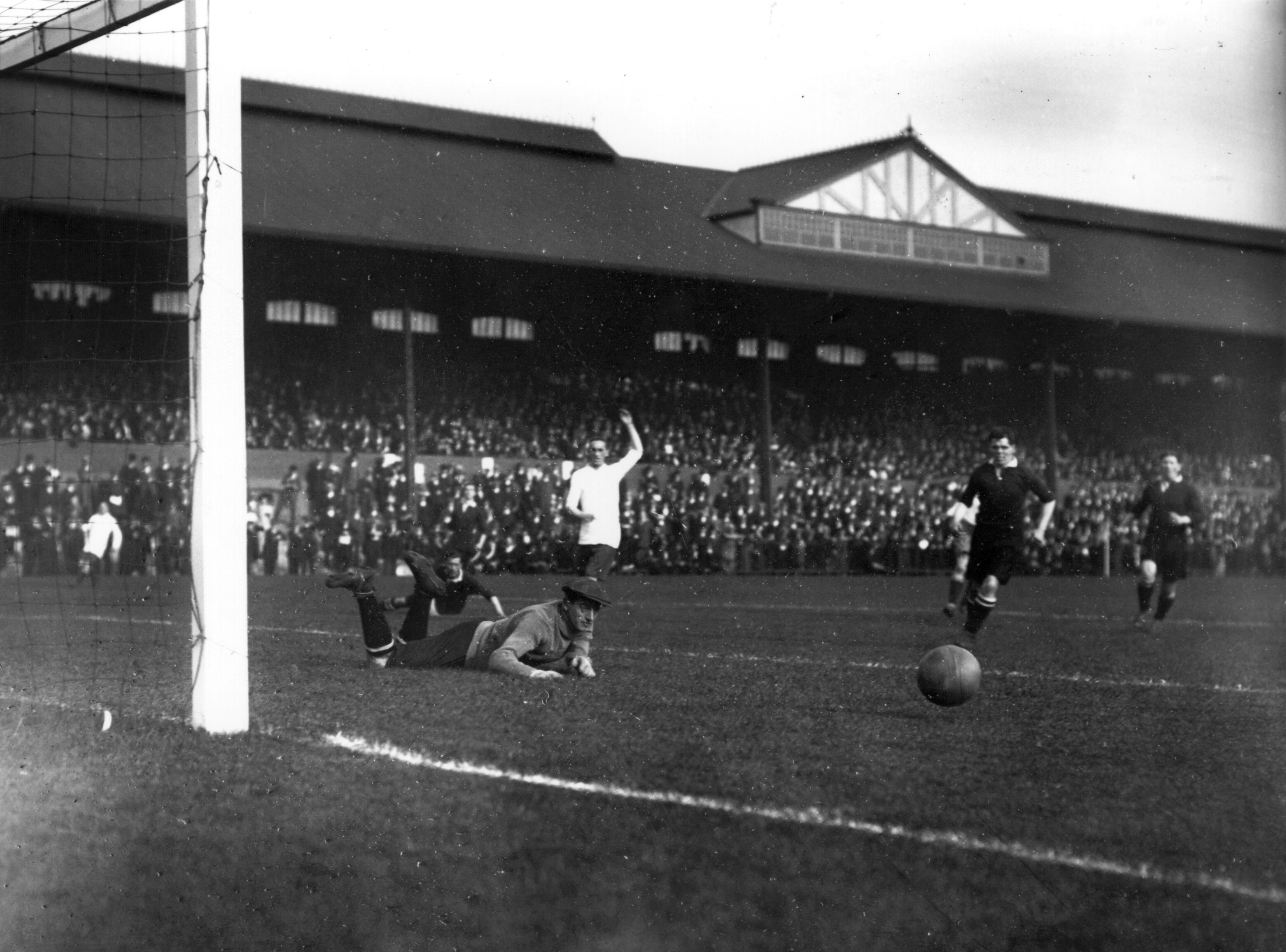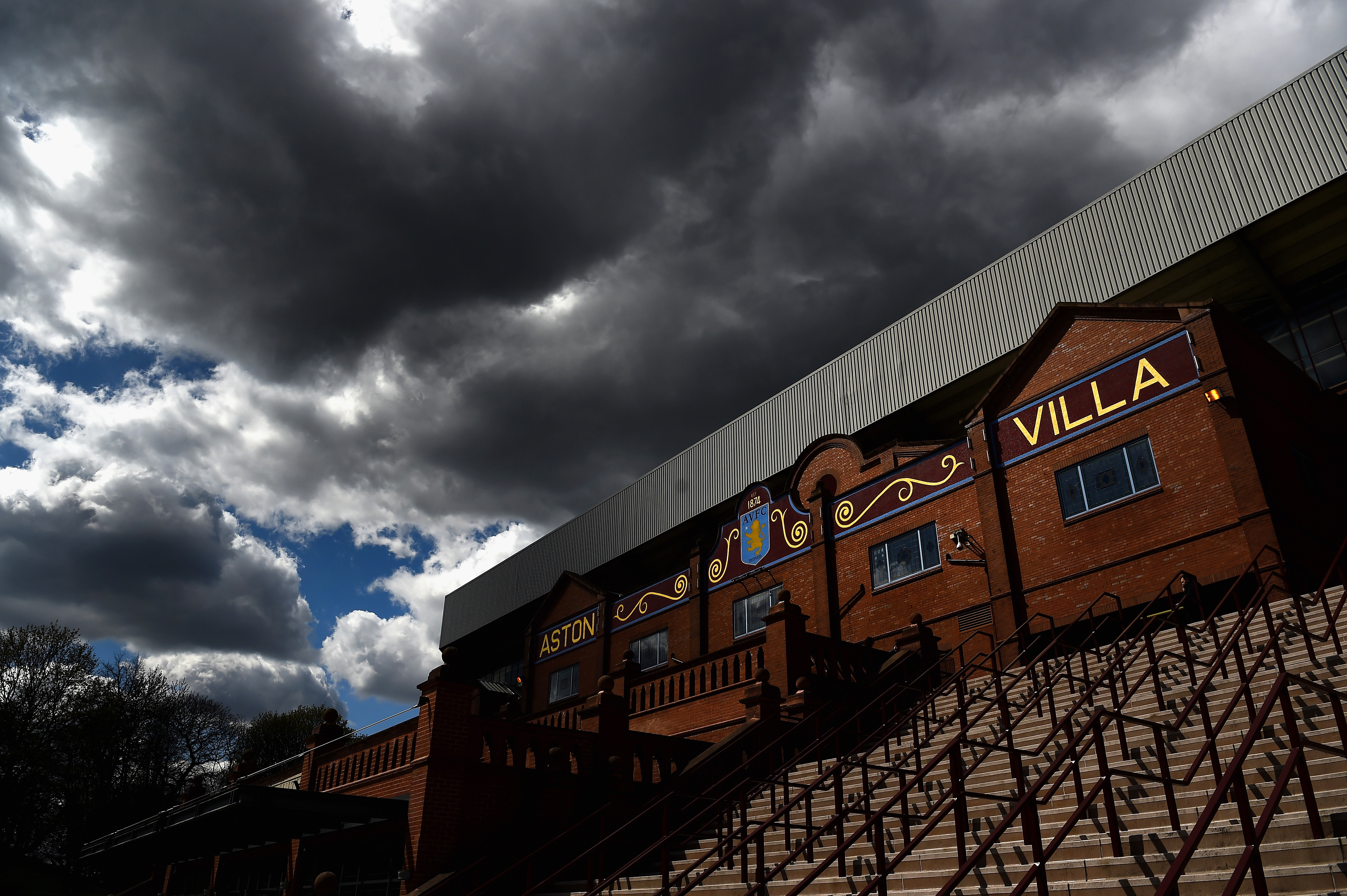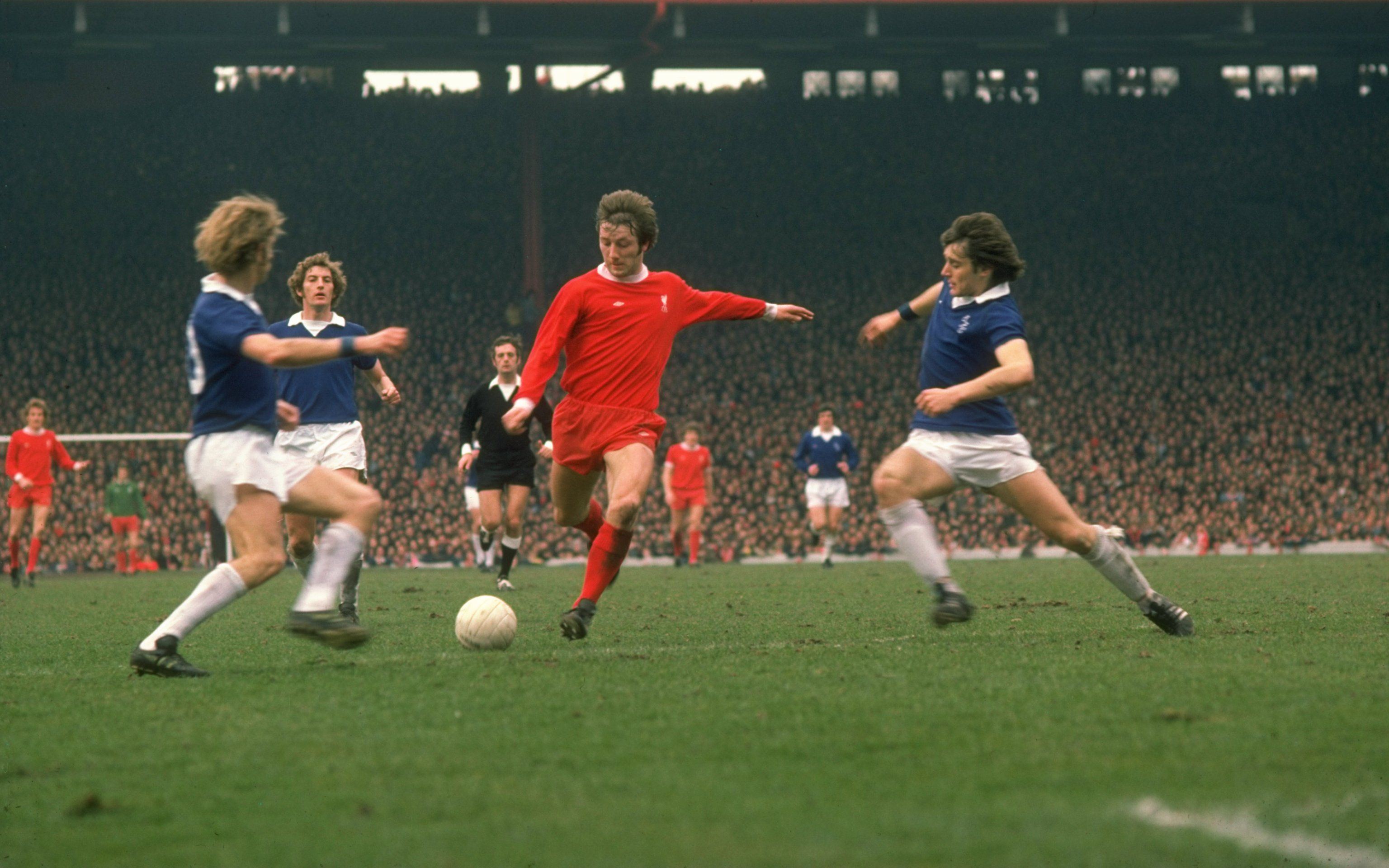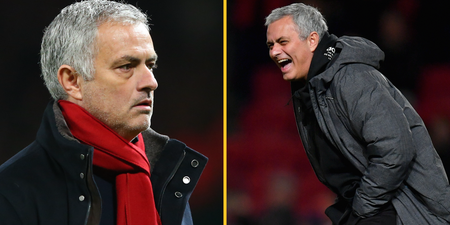They began as mounds of waste and soil. Sometimes they could be street sweepings and, in mining areas, they might have been a combination of slag and ashes. Those who had invested a bit of money initially built them out of wood.
They had one purpose: to provide a vantage point to facilitate watching this new craze. But the gathering of people on these hills, these terraces, were in their own way as much of a cultural phenomenon as the game they were watching.
They ended 100 years later as the pens for those seen as the marginalised and dispossessed, a monument to the abandonment of a generation and the deindustrialisation of a country.
When terraces disappeared from the biggest football grounds 25 years ago, the game people had been watching from them changed as well. Football would still try to accommodate the people, but as all-seater stadia were introduced, those who ran football clubs wanted different people.
The story of the evolution of the terrace in British sport is primarily the story of how society related to its young working-class men, who had become a mass movement in the late 19th century when their working lives had changed and they had to find something to do when Saturday comes.
In 1923, an estimated crowd of 150,000 turned up to watch the first FA Cup final at Wembley. The story of that day as it became part of folklore was not of a rampaging mob, but of a policeman on a white horse shepherding an exuberant mass of spectators.
Today we're running a debate on the return of safe standing in football. Here are some of the key questions answered https://t.co/5ySRrZSj3X
— FootballJOE (@FootballJOE) October 12, 2016
“Crowds were seen as joyous then,” says Professor Mike Cronin, academic director of Boston College in Dublin and a sports historian. Over the next sixty years, after another world war and a cultural transformation, the relationship between the crowds who stood on the terraces and those who watched over them would alter dramatically and tragically.
By the 1980s, those who stood on football terraces were perceived as the enemy. They were not joyous, happy crowds. They were part of the enemy within. “In the eyes of Thatcher and the conservatives, the whole push is about creating order in society and that extends to football,” Cronin says.
“Football,” the Sunday Times, summing up how some viewed the sport, wrote after Heysel in 1985 that football, “is a slum game played by slum people in slum stadiums.”
And so football changed, driven by the tragedy of Hillsborough, but driven, too, by this appreciation of a new audience, an entrepreneurial urge which was shared by the local businessmen who ran clubs a hundred years before and realised the people would come as long as they had somewhere to put them.
When the Factory Act of 1850 changed the life of the working classes, it ensured that football would become the most culturally significant game of the modern era. The working week would now end by 2pm on a Saturday and, with that new leisure time, those who worked in the factories or, more specifically, the men who worked in those factories would go to watch football.
It took time for this half day to be implemented across Britain; in Liverpool and east London, dockworkers took longer to acquire this free time which had already allowed workers in other parts of the country to watch football.
But it was about more than just watching football. The things that there were believed to be wrong about football a hundred years later were responsible for its explosion.
“It turned you into a member of a new community, all brothers together for an hour and a half,” JB Priestley wrote in The Good Companions. “…you had escaped with most of your mates and your neighbours, with half the town, cheering together, thumping one another on the shoulders, swapping judgments like Lords of the Earth, having pushed your way through a turnstile into another and altogether more splendid life, hurtling with Conflict and yet passionate and beautiful in its Art.”
They were Lords of the Earth, but dependent on others for their grace. The mounds of earth which would hold them were precarious and fragile.
Going to the Match
L S Lowry pic.twitter.com/DF5LRFVOGD— Julia Key Mitchell (@JamredrabbitKey) February 21, 2016
The industrial revolution had transformed Britain. People had moved from the country to the towns and in the late 19th century, wages rose. “The connections between football and industrialism were always more than mere coincidences, parallels or reflections,” David Goldblatt wrote in The Ball is Round.
As these two forces rose, they forged a new cultural identity. In The Game of Our Lives, Goldblatt quoted Eric Cantona after he had scored his first goal in England and watched as the supporters appeared to dive towards the pitch. “Only in England, could such ecstasy be found,” Cantona said. “Only in England,” Goldblatt wrote, “could the delirious celebrations of young men have become the central expressive ritual in an act of historical remembrance.”
This was the culture that developed as these men went to this new mass entertainment, and the stadiums were designed to hold as many as possible.
The clubs would take in as much money as they could, but those who ran them were restricted in what they could do with that money. They were limited in the dividends that could be paid to directors and anything they took at the turnstiles would be shared with the opposition. In 1919, it was agreed that 20 per cent of the gate money would go to the away side, an agreement which lasted until football embarked on the Premier League era.
“Football wasn’t delivered by the elite,” Cronin says. “The clubs are run by local middle class and lower middle class interests, the factories, the hotels. In towns like Halifax, Doncaster and Rotherham, they have a small scale entrepreneurial vision and you can charge supporters a small amount.”
To hold the people, it made sense to build terraces and nothing else. It wouldn’t have been cost effective, Cronin says, to build an all-seater stadium, even if anybody had thought of it.
There may have been seated stands at other sports like cricket, rugby union and horse racing, but they drew crowds from different areas of society. Football was watched by the working-class and the crowds were primarily male.
So these stadiums were erected and the bigger they got, the more people came. In 1884, 4,000 people attended the FA Cup final at the Kennington Oval. 17 years later, in 1901, there was an official attendance of 110,820 for the Cup final between Tottenham Hotspur and Sheffield United at Crystal Palace.
The following year, when Scotland played England at Ibrox, the wooden terracing on which the supporters were standing collapsed following heavy rainfall the night before. A 20-yard square hole appeared and hundreds of people fell fifty feet to the ground below. More than 600 hundred were injured and 25 people lost their lives. The game continued as police were worried that there would be a riot if it stopped while the emergency services felt it would hinder their rescue attempts.
In the years that followed, clubs dispensed with wooden terraces and developed ones of sloped earth and concrete which became familiar in the years before and after World War One.
In the 1920s, in the aftermath of a war which had wiped out a generation, there was an embracing of the frivolous among certain areas of society. Flappers were a phenomenon among a certain part of society, but the way the working class, who had been scarred more than anyone else by the war, escaped was through football.
“This was their response to the horrors of war,” Cronin says. A generation of young men had been massacred but football remained their escape.
Between the wars, attendances rocketed. 18 of the 20 record home attendances for English clubs were set between 1929 and 1949.
“Football was also recession proof,” Cronin says, noting that logically World War One should have depressed attendances but the opposite happened.
Football grounds changed as well, shaped by the architectural style of Archibald Leitch.
Leitch had designed Ibrox at the turn of the century and watched in horror as the wooden terrace gave away.
He managed to come out of the court case with his reputation spared. And he returned to football with new plans which he explored when he designed Stamford Bridge and Craven Cottage. The terraces would now be built on banks of earth can concrete. In 1906 Leitch patented his design for crush barriers which would be used on these new terraces and went on to design stadiums for Arsenal, Liverpool, Everton, Blackburn Rovers, Aston Villa and many other clubs.
The football ground with two main stands either side and terraces at both ends was developed by Leitch and the design played its part in shaping the culture that would develop between the wars and after 1945.
Other factors played a part as well. The 19th century had seen the Railway Mania. There was a craze for investment in rail companies and a bubble developed which, as they always do, subsequently burst. This time, something remained: an astonishing rail network which survived until Beeching took them apart in the 1960s.
These rail companies had rolling stock which was used to transport goods as well as people during the week, but was idle at weekends.
Soon the workforce would be free on Saturdays too – Henry Ford had first come with the idea of a five-day week in the US in 1926 as a way of getting his employees to buy stuff at weekends – and football supporters would use the rolling stock to travel by rail to games.
In the post-war years, football grounds were rebuilt again, but the model remained the same. As Britain emerged from the second brutal war in twenty years, a new generation emerged, more confident and more idiosyncratic.
The terraces reflected the change. At Burnden Park in 1946, 33 people lost their lives in a crush and an inquiry afterwards recommended more stringent crowd control.
In essence, the terrace didn’t change. In the 1960s, they were vibrant places. Panorama went to study the Kop, while football acquired a new audience as well, seduced by George Best and the prising open up ever so fractionally of class barriers.
But the terraces remained primarily the place for the same men who had always stood there.
In 1971, 66 people died during a crush at Ibrox. This led to the Guide to Safety at Football Grounds, the Green Guide, but over the coming years, football and its supporters would be seen less as people to whom a duty of care was owed, but as a hostile force with disastrous consequences.
Following Hillsborough and the Taylor Report, football would change. Clubs were given money by the Football Trust to convert to all-seater stadia and they moved with uncommon haste. “There is a speed to which they destroyed terrace culture,” Cronin says.
A leading campaigner has made the case for safe standing https://t.co/4y00libCgx
— FootballJOE (@FootballJOE) October 12, 2016
David Goldblatt points out that this radical change was not the result of risk from business but thanks to subsidy. “The new football economy did not begin with a private entrepreneurial energy or the invigorating arrival of private capital,” he wrote in The Game of Our Lives. “Rather it was triggered by an entirely avoidable tragedy and disaster; it was steered down a particular path of development by hand of the state; and a good chunk of the investment costs was paid by the taxpayer.”
There was a new audience and football wanted to capture them but they also traded on the cultural significance of the game, built in part by the people who would be excluded. The Taylor Report also recommended reasonable pricing, a recommendation which was often ignored. Terraces were seen as dangerous and synonymous with hooliganism, a link which Cronin rejects.
What had changed over the years was how society viewed the people – the young men – who stood on the terraces. When they were the engine of the industrial age, there was no problem. Cronin points out that nobody would have considered calling off the 1923 Cup final. The white horse controlling the crowd became part of the founding myth of English football rather than the starting point into an investigation into anarchy.
By the 1970s, the sons and grandsons of these men had a different role in society. Britain was no longer an industrial power, but instead was trying to manage its decline as the winter of discontent approached and Thatcher promised a reordering of society, if it existed at all.
Those who stood on the terraces were also those whose factories were being closed down and whose mines were being shut.
The football grounds of England reflected this fracture in society and the view from above was most destructively encapsulated in the events that led to Hillsborough on April 15th, 1989.
Hillsborough campaigner Margaret Aspinall tells us why we shouldn't entertain the idea of safe standing https://t.co/bXX2LpMjDU
— FootballJOE (@FootballJOE) October 12, 2016
On April 17 1989, the New York Times reported that ‘the Sheffield soccer disaster appears to be less a result of deliberate misbehaviour than of deplorable conditions at the stadium, which like many of the other soccer clubs’ home fields reflect class attitudes.’
Of course there were many that week engaged in twisting the tragedy to fit another narrative that would be enforced through cover-up and conspiracy over the coming decades.
But the truth was always known. The New York Times report continued on that grim Monday morning.
‘Since the 1930s, spectators at British soccer games have been drawn heavily from the working class, particularly in depressed industrial towns like Sheffield and Liverpool, where most of those killed in the crush in Sheffield came from.
”They are ‘treated like dirt inside and outside the stadium,’ a Labor Party Member of Parliament, Tony Banks, said this afternoon.
‘Dr. John Ashton, a professor of medicine at Liverpool University who took part in the rescue efforts, said in a telephone interview: ‘They treat people like animals. The police herd visiting supporters from the train, and the stadiums put them in these pens’.’
In the years that followed, stadiums would transform and the crowd that watched them would too. The average age of a spectator – spectators is what they have become – at a Premier League game is 41. The young men who provided the energy and the cultural significance watch someplace else and that has changed the tone of football.
“Going back to Roy Keane and the whole prawn sandwich debate,” Cronin says. “Once you have a price point that is excluding young men – and who knows more about football than young men? – you change the culture of the ground.”
The days when people could go to a game and stand next to their friends on the terraces has gone and that was always a practice most beloved of the young.
“Young people like spontaneity, they aren’t organised enough to block book seats, even if they could afford them,” Cronin adds.
UK football has a global audience now and certain grounds reflect that. The entrepreneurial spirit has now been unleashed but if there was a good reason for the change and for the development of all-seater stadia, there is also a sense that something has been lost.
“The evolution of football is hard-wired to the evolution of terracing,” Cronin says. But society has changed again during the Premier League years, Football and its audience, once again, may change with it.
